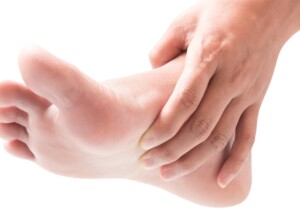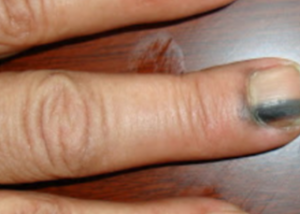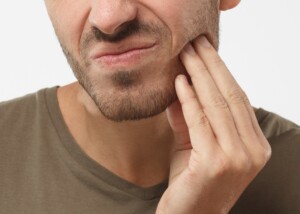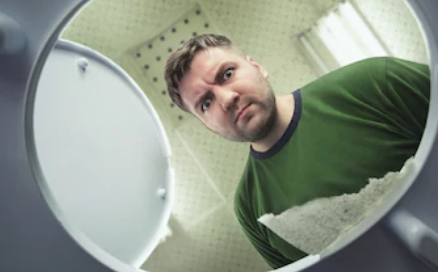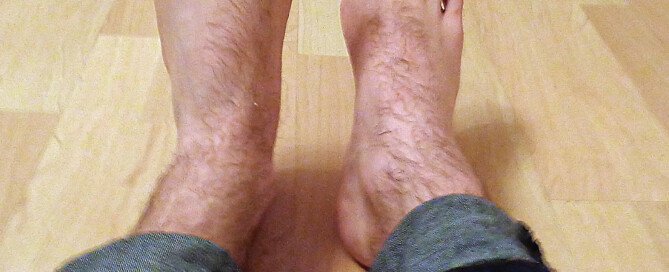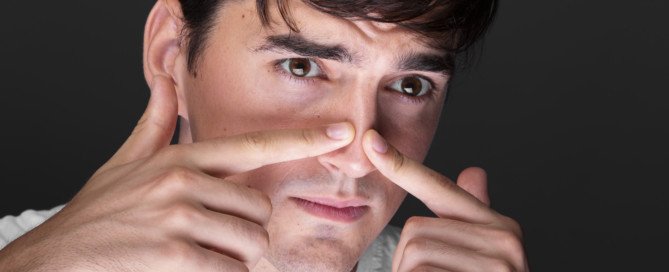Can White or Olive Skinned Children Get Nail Melanoma?

Though black adults are more likely to get nail melanoma, white and olive skinned children CAN get nail melanoma — which is deadly if not caught in time. (more…)
Burping up Acid Reflux While Asleep: Causes & Solutions

Have you ever been awakened by a sudden burping up of yucky tasting liquid that even may have dripped out of your mouth?
This is acid reflux that comes from the stomach.
It can be refluxed up as high as into the throat and into the mouth, making you “burp.”
It tastes kind of like what typical vomitus smells like. (more…)
Jaw Popping: Most Likely TMJ but Can Also Be Cancer

A popping or clicking jaw is a classic sign of the common TMJ disorder…
But cancer can also affect the jaw and cause popping, mimicking a benign TMJ problem.
Since cancer can grow just about anywhere in the body, why would the jaw bone or temporomandibular joint be exempt from this rule? It isn’t.
A variety of conditions can mimic TMJ disorder (aka TMD), and cancer – one of the greatest masqueraders – is one of them.
A disease process that affects the jaw can make it produce popping or clicking sounds, plus cause other symptoms such as soreness, stiffness, pain chewing and facial swelling.
When cancer is the cause of TMJ disorder, the treatment that’s typically applied by a dentist will not work.
Further investigation into such a patient’s worsening symptoms leads to an imaging study that shows a cancerous mass.
“Cancer spread to the oral cavity is uncommon, but it does happen, accounting for approximately one percent of tumors in the mouth,” says Jonathan Stegall, MD, an integrative oncologist and medical director for The Center for Advanced Medicine, an adult cancer treatment center in Alpharetta, GA.
“However, when cancer does spread to this area, the mandible (jaw) is the most frequent site of metastasis, accounting for over 70% of these cases.
“The most common primary sites of cancer which metastasize here are breast, adrenal, colorectal, female genital organs and thyroid for women; and lung, prostate, kidney, bone and adrenal for men.
“While cancer metastases to the jaw can cause various symptoms, TMJ [disorder] is certainly one it can mimic.
“TMJ is caused by jaw joints which are out of alignment, whereas jaw pain from cancer is due to the tumor.”
According to a paper in Journal of Orofacial Pain (Fall, 1999), TMD is often the go-to and only diagnosis for patients who present with unexplained orofacial pain or some kind of dysfunction in that area.
Certainly, when a patient presents to a dentist with complaints of jaw popping and other symptoms associated with TMD, the dentist’s first thought isn’t going to be, “This could be cancer that has spread from a prostate tumor.”
Again, cancer in the jaw isn’t necessarily a primary tumor; it could be a metastasis from a distant site in the body.
A paper in Oral Surgery, Oral Medicine, Oral Pathology, Oral Radiology (Nov. 1985) describes a case of prostate cancer that had metastasized to the mandibular condyle (jaw joint).
Here is the paper’s summary of how cancer can mimic benign TMJ disease:
The patient had a metastatic tumor involving the jaw, with symptoms of TMJ dysfunction.
“A review of the literature revealed fifteen additional cases of metastatic lesions of the mandibular condyle, seven which also demonstrated TMJ-related symptoms as the initial manifestation of malignant disease,” states the paper.
The Journal of the American Dental Association (Feb. 1990) reports, “When a patient is initially diagnosed with TMJ disease, failure to respond to appropriate therapy should alert the clinician that the initial diagnosis may be incorrect.”
This paper cites the case of a patient with malignant Schwannoma (not the vestibular type, which is benign) who had originally been misdiagnosed with TMJ disorder.
The existence of cancer mimicking a benign problem with the jaw does not mean that jaw cancer is common.
The JADA even states, “This is only the second reported case of this tumor [Schwannoma] with TMJ symptoms.”
Another paper, called “Metastatic Carcinoma of the Mandibular Condyle Presenting As Temporomandibular Joint Syndrome” states:
“It has been estimated that fewer than one percent of all tumors metastasize to the maxillofacial area.”
The paper, appearing in The Journal of Oral and Maxillofacial Surgery (Rubin et al) points out, however, that this percentage could be an underestimation due to the following factors:
• Exclusion of the mandible in postmortem examinations
• Difficulty with radiographic interpretation of metastatic cancer to the mandible
The JOMS report cites another study (Batsakis et al) that lists the following primary cancer sites of spread to the jaw (descending order): breast, kidney, lung, colon/rectum, prostate, thyroid, stomach, skin and testes.
Though information about this is in the medical literature, the mere presence of this information does not correlate to frequency in the population of jaw cancer.
Plus, the fact that many different cancers can spread to the jaw area does not mean that jaw cancer is a common cause of popping, clicking or other symptoms of benign TMD.
The JOMS states, “Only 13 cases of metastasis to the mandibular condyle have been reported in the literature.”
However, this paper was published in 1989, and metastases can still occur to other portions of the mandible.
In fact, most cancer mets to the mandible are in the molar and premolar regions of this structure.
These areas, when affected by cancer, can mimic TMD symptoms such as popping, clicking or issues with chewing.
Jaw cancer can also be from direct extensions of local malignancy from the skin, parotid, ear or nasopharynx.
Benign tumors can also arise in the mandibular condyle.
With all of that said, there is no answer to the following question: What percentage of patients, presenting with a popping jaw and other classic TMD symptoms, have jaw cancer (either local or distant metastatic)?
What IS clear, though, is that cancer – as a cause of jaw popping – is exceedingly rare.
This is precisely why, in my research for this article, the cited papers date back many years!
That’s your reassurance of how rare this location for cancer actually is!
At the same time, dentists need to be vigilant about ruling this out before proceeding with treatment designed for benign TMJ disorder.
 Jonathan Stegall, MD, provides a long-awaited remedy for our cancer problem. Having a successful integrative oncology practice in Atlanta, GA, he’s seen firsthand what works and what doesn’t with cancer treatment. Dr. Stegall is the creator of the Cancer Secrets Podcast and author of “Cancer Secrets,” available on Amazon.
Jonathan Stegall, MD, provides a long-awaited remedy for our cancer problem. Having a successful integrative oncology practice in Atlanta, GA, he’s seen firsthand what works and what doesn’t with cancer treatment. Dr. Stegall is the creator of the Cancer Secrets Podcast and author of “Cancer Secrets,” available on Amazon.
 Lorra Garrick has been covering medical, fitness and cybersecurity topics for many years, having written thousands of articles for print magazines and websites, including as a ghostwriter. She’s also a former ACE-certified personal trainer.
Lorra Garrick has been covering medical, fitness and cybersecurity topics for many years, having written thousands of articles for print magazines and websites, including as a ghostwriter. She’s also a former ACE-certified personal trainer.
.
Top image: Shutterstock/Syda Productions
Sources
oooojournal.net/article/0030-4220(85)90240-3/fulltext
jada.ada.org/article/S0002-8177(90)02011-6/abstract
joms.org/article/0278-2391(89)90286-3/pdf
sciencedirect.com/science/article/pii/S1079210410001393
web.a.ebscohost.com/abstract?direct=true&profile=ehost&scope=site&authtype=crawler&jrnl=10646655&asa=Y&AN=37270394&h=Fp99j1zZRzNPsi25O8pkFTCKeWN%2byHpMl%2baTk1U2dsy4bp%2bAXvnsZO9jccbQIMVk6ju6OJuFjLAFHxVtC28WVw%3d%3d&crl=c&resultNs=AdminWebAuth&resultLocal=ErrCrlNotAuth&crlhashurl=login.aspx%3fdirect%3dtrue%26profile%3dehost%26scope%3dsite%26authtype%3dcrawler%26jrnl%3d10646655%26asa%3dY%26AN%3d37270394
Should Very Dark Skinned Children Wear Sunscreen?

It’s definitely important to apply sunscreen on your very dark skinned child, says a dermatologist who specializes in patients of color.
Sunscreen advertisements always show fair skinned people putting it on. Advertising is very powerful, creating all sorts of illusions, distorting reality. (more…)
Hemorrhoid Blood vs. Colon Cancer Blood: Is There a Difference?
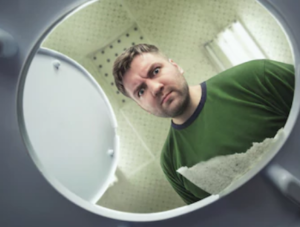
Is there a distinction with the way the blood would look if it’s from a hemorrhoid vs. rectal fresh blood from colon cancer?
Both hemorrhoid blood and colon cancer bleeding from the lower rectum is red rather than brown. It’s often described as a bright red or fresh looking. (more…)
How Likely Are Nighttime Nosebleeds Caused by Cancer?

A nosebleed especially at night in a person with health anxiety will bring to mind cancer as a cause, especially since cancer CAN arise inside the nose. (more…)
Can Blood in Stools Look Like Scattered Red Bits of Food ?
Just exactly what would fresh blood in “bloody stools” look like?
Could they appear as random red bits or specks of food? Would there be a reddish film covering the stools? (more…)
Can Cancer of the Penis Make It Smell?

Many men notice a bad odor coming from their penis.
Cancer can affect the penis and has a high mortality rate.
If a man begins detecting a smell from his penis, the first thing that should come to his mind is that the odor is most likely being caused by poor hygiene. (more…)
Foot Drop, No Other Symptoms: ALS or Brain Tumor?

For people with ALS anxiety, foot drop is often at the top of their worries.
They may imagine foot drop and wonder if it’s ALS or a brain tumor causing it. (more…)
Can Cancer Cause Only One Nostril to Be Clogged?

What is the likelihood that when someone has a persistently clogged single nostril that it’s cancer?
When a bothersome symptom occurs on only one side, this can cause a lot of anxiety, bringing to mind the possibility of a malignancy.
A malignant mass on some area of the body very rarely has an opposite side twin. Symptoms from cancer usually appear on one side of the body when left-right quadrants are applicable.
For example, a bleeding or inverted nipple from breast cancer; an eye symptom or leg weakness from a brain tumor; or a nose symptom from a sinus tumor.
Though many cancers cause symptoms that don’t involve sides of the body, such as bloody bowel movements, weight loss, suppressed appetite, fatigue, coughing, a hoarse voice and difficulty swallowing, many symptoms DO involve one side or the other – determined by the cancer’s location.
Cancer in the left lung, for example, might cause pain in the left shoulder, but not the right shoulder.
So when just one nostril is stuffed up – longer than it should be from a cold – this gets some people really worrying about a tumor.
“Although it is possible that a clogged nostril is from a cancer of some kind, cancer is really far down the list of potential causes,” says Gene Liu, MD, MMM, President, Chair, Department of Surgery; Chief, Division of Otolaryngology, Cedars-Sinai Medical Group.
“Astronomically more common than cancer are explanations such as a deviated septum, enlarged turbinates [nasal structure], polyps, fungus/mold, foreign bodies and many benign growths,” explains Dr. Liu.
Benign Growths of the Nasal Cavity
• Cysts – Fluid filled sac.
• Hemangioma – Vascular concentration.
• Inverting papilloma – Wart-like growth.
• Osteoma – Bony overgrowth.
• Polyps – Overgrowth of the mucosal lining of the nasal cavities.
Dr. Liu explains, “Many types of cancer can cause a clogged nostril, but all of them are rare.
“Nasopharyngeal cancer, squamous cell cancer, other cancers involving the mucosal lining, esthesioblastoma and sinonasal undifferentiated carcinoma (SNUC) are just some of the types that can be found in the sinuses or nasal cavity.”
If you put all these cancers, that can cause one nostril to be blocked, together, they’d comprise a very small percentage of ALL the possible things inside the nose that can stuff up only one nostril.
Want more reassurance? Consider the risk factors for sinus or paranasal cancer:
• Occupational exposure to wood, leather or nickel dust
• Smoking
• Occupational exposure to the chemicals used to make rubbing alcohol
• Occupational exposure to radium-226
• Epstein-Barr virus
• Inverted papilloma. This rare and benign growth has up to a 10 percent chance of malignant ransformation.
Additional Reassurance
Stop thinking that cancer is causing one nostril to be clogged. Paranasal cancers are very rare.



